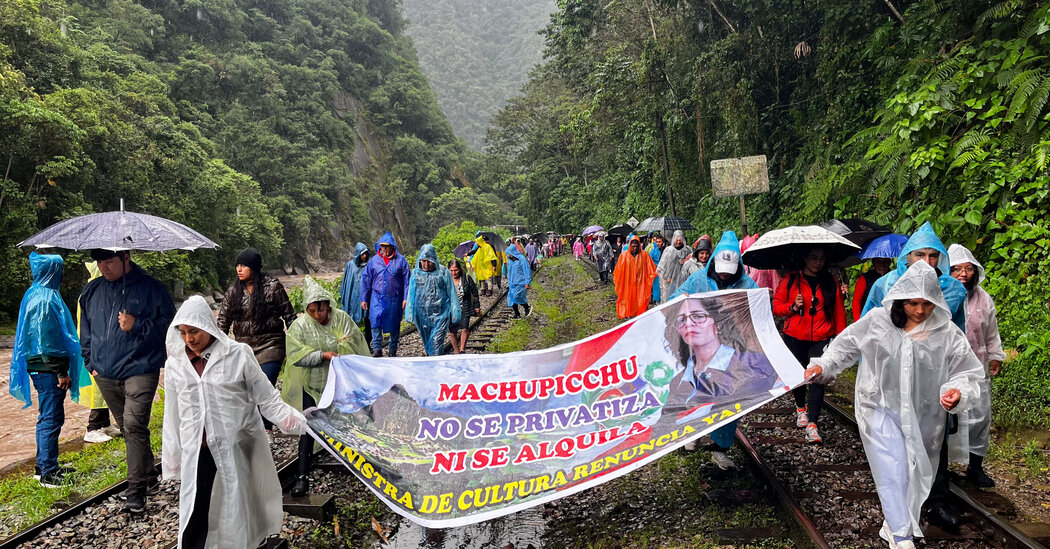
Hundreds of tourists were stranded near Machu Picchu, Peru’s most-visited site, over the weekend after demonstrators blocked railway and bus routes to the site and shut down local shops and restaurants in Aguas Calientes, the gateway to Machu Picchu, in the country’s Cuzco region. Some visitors posted videos on social media pleading for help. The police evacuated about 700 tourists on Saturday. Many left without seeing the site.
The protesters had taken to the streets on Thursday to demand the government rescind a contract that allows a company to sell tickets to Machu Picchu for the first time. Tickets had previously been sold through the office of culture in Cuzco, which is controlled by the regional government.
Protesters agreed to a 24-hour “truce” on Tuesday to take part in talks with government officials. While Machu Picchu is officially open, train service to Aguas Calientes and buses that take tourists to the citadel remain suspended. The U.S. Embassy advised travelers who want to try to reach the site by other means to make sure they take enough food and any medicine they might need.
Machu Picchu, believed to be a 15th-century getaway for Incan royalty, received some 2.2 million visitors last year, below prepandemic levels of 4.6 million. Peru has been trying to encourage tourists to visit other ancient sites in part to prevent overcrowding, which UNESCO has warned could damage parts of its structure.
Who is protesting and why are they angry?
Protesters include tour operators, guides, activists and residents in the region of Cuzco. They are opposed to a private company profiting from sales of tickets to Machu Picchu and claim that the company, Joinnus, an events marketing platform, was chosen to administer the sales last year through a corrupt deal with the culture minister, Leslie Urteaga, which she denies.
Elvis La Torre, the mayor of Aguas Calientes, said that the government did not consult local authorities or residents about the new online system.





